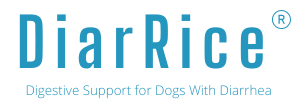Slow Diet Changes for Dogs: A Safe and Effective Approach

If you're a dog owner, you know how important it is to maintain a balanced diet for your furry friend. However, changing your dog's diet can be a tricky process that requires careful planning and execution. Abrupt changes to your dog's diet could result in gastrointestinal disturbances that lead to vomiting and/or diarrhea. That's why it's important to transition your dog's food gradually to avoid upsetting their stomach.
Understanding your dog's dietary needs is the first step in planning a diet change. Your veterinarian can help you determine the appropriate serving size for your dog based on their weight and health needs. Additionally, different life stages and breeds may require different types of food. For example, smaller breed puppies should transition to adult dog food sooner than larger breeds.
Planning the transition to new dog food is crucial to ensuring a smooth change. Executing a gradual transition, where you mix the old and new food together over a period of 7-10 days, can help your dog adjust to the new food without causing stomach upset. Maintaining a balanced diet post-transition is also important to ensure your dog is getting all the necessary nutrients.
Key Takeaways
- Understanding your dog's dietary needs is crucial to planning a successful diet change.
- A gradual transition to new dog food is important to avoid stomach upset.
- Maintaining a balanced diet post-transition is crucial to ensuring your dog gets all the necessary nutrients.
Understanding Your Dog's Dietary Needs
When it comes to your dog's diet, it is important to take into account their life stage and size. Puppies have different dietary needs than adult or senior dogs, and larger breeds have different needs than smaller breeds. The right balance of nutrients is essential to ensure your dog stays healthy and happy.
Importance of Life Stage and Size
Puppies require more protein, fat, minerals, and vitamins than adult dogs because they are growing and developing. Senior dogs, on the other hand, may require fewer calories and less fat to maintain a healthy weight. It is important to choose a diet that meets the specific needs of your dog's life stage and size.
Identifying Allergies and Sensitivities
Allergies and sensitivities can cause a range of health problems in dogs, from digestive issues to skin problems. Common allergens include beef, chicken, dairy, and wheat. If you suspect your dog has an allergy or sensitivity, it is important to work with your veterinarian to identify the specific allergen and choose a diet that does not contain it.
When selecting a diet for your dog, it is important to read the label carefully to ensure it contains all the necessary nutrients. Look for a balance of protein, fat, minerals, and vitamins, as well as essential fatty acids to keep your dog's skin and coat healthy. Gradual changes to your dog's diet can also help prevent digestive upset.
Planning the Transition to New Dog Food
Transitioning your dog's diet to a new food can be a daunting task, but it's important to do it gradually to avoid upsetting your furry friend's stomach. Here are some tips to help you plan the transition period.
Evaluating Current Diet and Health Concerns
Before transitioning your dog to a new food, it's important to evaluate their current diet and any health concerns they may have. Take note of the brand and type of food they are currently eating, as well as any medical conditions they may have that could be affected by a change in diet.
If your dog has a medical condition, consult with your veterinarian before making any dietary changes. They may recommend a prescription diet or provide guidance on what type of food would be best for your dog's specific needs.
Choosing the Right Time for Dietary Changes
Choosing the right time to transition your dog to a new food is crucial. Avoid making changes during times of stress or change, such as moving to a new home or the addition of a new pet to the household. It's also important to choose a high-quality dog food that provides balanced nutrition.
When selecting a new dog food, read the pet food label carefully and look for the Association of American Feed Control Officials (AAFCO) statement to ensure that the food meets the minimum nutritional requirements for dogs. You may also want to consider a high-quality dog food that contains natural ingredients and is free from artificial preservatives, colors, and flavors.
In summary, planning the transition to new dog food is an important step in ensuring your dog's health and well-being. By evaluating your dog's current diet and health concerns, choosing the right time for dietary changes, and selecting a high-quality dog food, you can help ensure a smooth transition to a new diet for your furry friend.
Executing a Gradual Transition
If you're planning to switch your dog's food, it's crucial to do it gradually to avoid gastrointestinal upset. Here, we provide a step-by-step guide to help you introduce new food to your dog's diet slowly.
Step-by-Step Guide to Introducing New Food
- Start by mixing a small amount of the new food with your dog's current food. Gradually increase the amount of new food over the course of several days.
- Monitor your dog's response to the new food. Observe their appetite, stool quality, and any signs of discomfort.
- If your dog has a sensitive stomach, you may need to take even longer to transition them to the new food. Consider changing their food over a full month's time if needed.
- Ensure that your dog stays hydrated during the transition. If your dog experiences loose stool or diarrhea, make sure to provide them with plenty of water to avoid dehydration.
- If your dog has a weakened immune system or digestive system, consult with your veterinarian before changing their food.
Monitoring Your Dog's Response
During the transition, it's essential to monitor your dog's response to the new food. Here are some signs to look out for:
- Vomiting or diarrhea
- Decreased appetite
- Loose stool
- Signs of discomfort or pain
If your dog experiences any of these symptoms, slow down the transition or consult with your veterinarian. Remember, a gradual transition is key to a successful switch in your dog's food.
Maintaining a Balanced Diet Post-Transition
Now that you have successfully transitioned your dog to a new diet, it's important to maintain a balanced diet to ensure your dog's long-term health and nutrition. Here are a few things to keep in mind:
Assessing Long-Term Health and Nutrition
Regular check-ups with your veterinarian are important to ensure that your dog is getting all the necessary nutrients and is not experiencing any health concerns. Additionally, you should continue to monitor your dog's weight, coat, and overall health to make sure that your dog is thriving on the new diet.
It's important to note that not all dog foods are created equal. Look for dog food that meets the nutritional standards set by the Association of American Feed Control Officials (AAFCO) for all life stages. This ensures that your dog is getting the right balance of nutrients for optimal health.
Adjusting for Activity Level and Weight Management
Dogs have different activity levels and require different amounts of calories. If your dog is more active, they may require more calories. Conversely, if your dog is less active, they may require fewer calories. Adjusting your dog's diet accordingly can help with weight management.
If your dog is overweight or obese, consult with your veterinarian to develop a weight loss plan. This may involve reducing calorie intake and increasing exercise. Additionally, look for dog food that is specifically formulated for weight management.
In conclusion, maintaining a balanced diet post-transition is important for your dog's long-term health and nutrition. Regular check-ups with your veterinarian, monitoring your dog's weight and coat, and adjusting your dog's diet for their activity level and weight management are all important factors to consider.
Frequently Asked Questions
What is the recommended pace for introducing new food to a dog's diet?
When introducing new food to a dog's diet, it is recommended to do so gradually over a period of 7-10 days. This allows the dog's digestive system to adjust to the new food. During the first 2-3 days, mix 25% of the new food with 75% of the old food. On days 4-6, mix 50% of the new food with 50% of the old food. On days 7-9, mix 75% of the new food with 25% of the old food. On day 10, you can switch to 100% of the new food.
Can abrupt changes in diet cause health issues for dogs?
Abrupt changes in diet can cause gastrointestinal disturbances such as vomiting and diarrhea. This can be uncomfortable for the dog and can also lead to dehydration. Gradual changes in diet are recommended to avoid these issues.
What signs indicate a dog is adapting well to a new diet?
A dog that is adapting well to a new diet will have normal bowel movements and no signs of gastrointestinal distress. The dog will also have a healthy appetite and maintain a healthy weight.
How can pumpkin be incorporated into a dog's diet for easier food transition?
Pumpkin is a great source of fiber and can help regulate a dog's digestive system. It can be added to a dog's diet by mixing a tablespoon of canned pumpkin (not pumpkin pie filling) into their food. This can help ease the transition to a new diet.
What homemade recipes are effective for canine weight loss?
Homemade recipes for canine weight loss should be nutritionally balanced and low in calories. A recipe that includes lean protein, vegetables, and a small amount of carbohydrates can be effective. An example recipe is boiled chicken, brown rice, and mixed vegetables.
Are there any supplements that can aid in a dog's weight loss journey?
Supplements can be helpful in aiding a dog's weight loss journey. Some supplements that can be effective include omega-3 fatty acids, probiotics, and glucosamine. It is important to consult with a veterinarian before adding any supplements to a dog's diet.
Related Articles about Sudden Diet Changes in Dogs
Dog Diarrhea Diet Fix
Sudden Diet Changes Causes
Preventing Diet Changes
Dog Diarrhea Diet Signs
Managing Diet Changes
Consult Vet Diet Shifts
Safe Dog Diet Changes
Balanced Diet For Dogs
Risks of Sudden Diet Changes
Jeffrey Kordell
Dr. Jeff Kordell, DVM is a practicing veterinarian in the northern suburbs of Chicago. He is a graduate of the University of Illinois Veterinary School. Dr. Kordell owns Animal Medical Center at Fort Sheridan and has had his own private practice for over 30 years. He is the co-founder of K&S Veterinary Labs LLC the maker of DiarRice.

